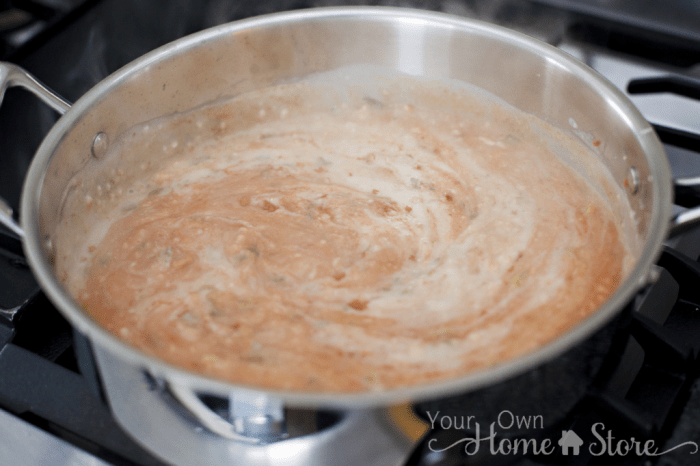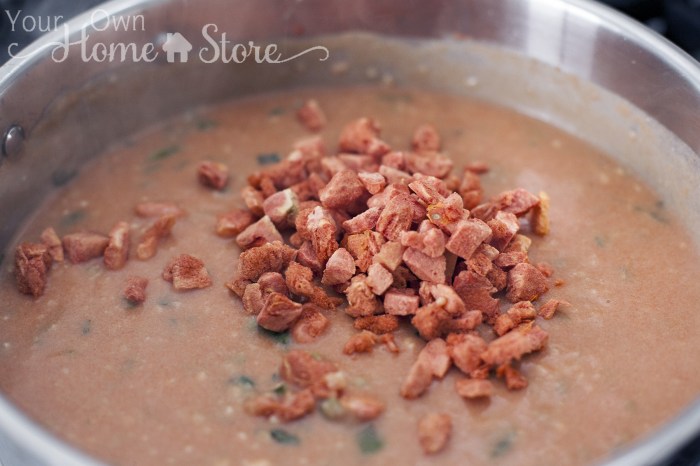Bayou Sauce: A Deep Dive into Louisiana’s Culinary Gem: Bayou Sauce Recipe
Bayou sauce recipe – Bayou sauce, a vibrant condiment hailing from the bayous of Louisiana, boasts a rich history intertwined with the region’s unique culinary heritage. Its origins are difficult to pinpoint precisely, as its development likely evolved organically over time, reflecting the fusion of various cultural influences within the Louisiana landscape. The sauce’s characteristic flavor profile stems from a blend of ingredients that vary considerably depending on the cook and their family traditions.
This exploration delves into the heart of Bayou sauce, examining its composition, variations, applications, and the art of crafting it at home.
Introduction to Bayou Sauce, Bayou sauce recipe
Bayou sauce is a versatile condiment that embodies the spirit of Louisiana cuisine. Its origins are deeply rooted in the Cajun and Creole cultures, reflecting the resourceful use of readily available ingredients. While a precise historical origin is elusive, the sauce’s evolution likely involved experimentation with readily available ingredients like peppers, tomatoes, and spices, creating a flavorful sauce that complemented the region’s seafood and other dishes.
The typical ingredients include a base of tomatoes, peppers (varying in heat levels), onions, garlic, vinegar, and a blend of herbs and spices. The balance of sweet, sour, and spicy elements creates a range of flavor profiles, with some recipes emphasizing sweetness, others leaning towards heat, and still others focusing on a smoky depth. The variations in flavor profiles depend heavily on the specific types and quantities of peppers, the type of vinegar used, and the addition of other seasonings.
Classic Bayou Sauce Recipe

Source: simplefamilypreparedness.com
This recipe provides a foundation for creating a classic Bayou sauce, emphasizing the balance of flavors. Precise measurements ensure consistent results, although adjustments can be made to suit personal preferences.
| Ingredient | Quantity | Unit | Notes |
|---|---|---|---|
| Ripe Tomatoes | 2 | lbs | Roma or heirloom tomatoes recommended |
| Green Bell Pepper | 1 | large | Adds sweetness and texture |
| Jalapeño Peppers | 2-3 | medium | Adjust quantity based on desired heat level |
| Yellow Onion | 1 | medium | Finely chopped |
| Garlic | 4 | cloves | Minced |
| White Vinegar | 1/2 | cup | Apple cider vinegar can also be used |
| Brown Sugar | 2 | tablespoons | Adjust to taste |
| Cayenne Pepper | 1/2 | teaspoon | Optional, for extra heat |
| Salt | 1 | teaspoon | Adjust to taste |
| Black Pepper | 1/2 | teaspoon | Freshly ground is preferred |
| Dried Oregano | 1 | teaspoon | Adds an earthy note |
The sauce is prepared by first sautéing the onions and peppers until softened, then adding the garlic and cooking briefly. The tomatoes, vinegar, brown sugar, and spices are added, and the mixture is simmered until thickened, stirring occasionally to prevent sticking. The consistency should be slightly chunky, reflecting the texture of the tomatoes and peppers.
Variations on Bayou Sauce
The beauty of Bayou sauce lies in its adaptability. Three distinct variations showcase the versatility of this condiment: Spicy Bayou Sauce, Sweet Bayou Sauce, and Smoky Bayou Sauce. Each variation uses a unique blend of ingredients to achieve a distinct flavor profile.
Spicy Bayou Sauce:
- Unique Ingredients: Habanero peppers, additional cayenne pepper, a dash of hot sauce.
- Flavor Profile: Intensely hot with a lingering burn, balanced by the sweetness of the tomatoes.
Sweet Bayou Sauce:
- Unique Ingredients: Increased amount of brown sugar, a touch of honey or maple syrup, less vinegar.
- Flavor Profile: Sweet and tangy, with a mellow heat.
Smoky Bayou Sauce:
- Unique Ingredients: Smoked paprika, chipotle peppers in adobo sauce, liquid smoke (optional).
- Flavor Profile: Deep smoky flavor with a subtle heat and a rich, complex taste.
Bayou Sauce Applications

Source: simplefamilypreparedness.com
Bayou sauce enhances a wide variety of dishes, adding a flavorful kick to both savory and slightly sweet options. Its versatility makes it a staple in Louisiana cuisine.
| Dish | Bayou Sauce Variation Recommendation |
|---|---|
| Grilled Shrimp | Classic or Spicy |
| Fried Chicken | Sweet or Classic |
| Roasted Vegetables | Smoky |
| Po’boys | Classic or Spicy |
| BBQ Ribs | Smoky |
Making Bayou Sauce at Home: Tips and Tricks
Achieving the perfect Bayou sauce requires attention to detail. Consistent stirring prevents burning and ensures even thickening. Using ripe, high-quality tomatoes enhances the overall flavor. Troubleshooting involves addressing potential issues such as overly thin consistency (reduce cooking time), overly thick consistency (add a bit of water or broth), and excessive heat (reduce the amount of chili peppers).
Proper storage is crucial for maintaining quality. Store homemade Bayou sauce in airtight containers in the refrigerator for up to a week. Freezing extends shelf life to several months.
Visual Representation of Bayou Sauce
A perfectly made Bayou sauce boasts a rich, deep red color, punctuated by the vibrant hues of the peppers and onions. The consistency should be slightly chunky, with visible pieces of tomatoes and peppers, but not watery or overly thick. The overall appearance is inviting and appetizing, reflecting the fresh, flavorful ingredients used. The glossy sheen suggests a well-balanced blend of oil and moisture, indicative of proper simmering and reduction.
The aroma should be fragrant and enticing, promising a burst of flavor.
Comparison of Different Bayou Sauce Recipes

Source: dvcshop.com
Comparing two published recipes reveals variations in ingredient choices and cooking methods, impacting the final product’s flavor and texture. These differences highlight the subjective nature of Bayou sauce recipes, where personal preferences dictate the final result.
| Recipe Source | Key Ingredients | Cooking Method |
|---|---|---|
| Recipe A (Example) | Roma tomatoes, green bell pepper, cayenne pepper, white vinegar, brown sugar | Simmered until thickened |
| Recipe B (Example) | Heirloom tomatoes, jalapeño and serrano peppers, apple cider vinegar, honey | Slow-cooked with occasional stirring |
FAQ Compilation
Can I make bayou sauce ahead of time?
Bayou sauce, with its rich blend of spices and often a touch of sweetness, offers a unique flavor profile. For a similar sweet and savory experience, but with a distinctly different character, you might explore a apple cider sauce recipe ; the tartness of the cider provides a fascinating contrast to the bayou sauce’s usual warmth. Returning to bayou sauce, its versatility allows for countless adaptations, making it a perfect accompaniment to various dishes.
Yes, bayou sauce stores well in the refrigerator for up to a week. For longer storage, consider freezing it in airtight containers.
What can I substitute for certain ingredients if I don’t have them on hand?
Substitutions depend on the specific ingredient. For example, you could substitute apple cider vinegar for white vinegar, or use a different type of pepper for a varied heat level. However, altering ingredients may impact the final flavor profile.
Is bayou sauce gluten-free?
Generally, yes, as long as you use gluten-free ingredients. Always check ingredient labels to ensure there are no hidden gluten sources.
What consistency should I aim for?
The ideal consistency is typically thick but pourable, similar to a chunky tomato sauce. Adjust simmering time to achieve your desired thickness.
